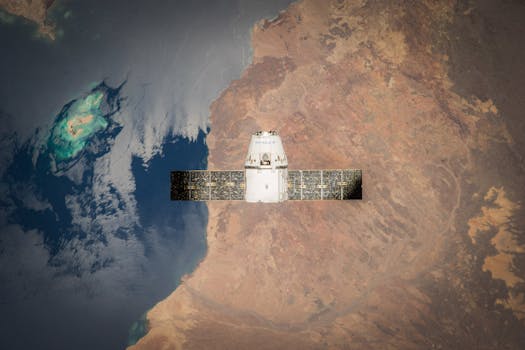High-Tech Horizons: The Evolution of Earth-Orbiting Technologies for Observation

High-Tech Horizons: The Evolution of Earth-Orbiting Technologies for Observation
Introduction to High-Tech Horizons: The Evolution of Earth-Orbiting Technologies for Observation
High-Tech Horizons: The Evolution of Earth-Orbiting Technologies for Observation has been a game-changer in the field of space exploration and observation. The ability to launch satellites into Earth’s orbit has enabled us to study the planet in unprecedented detail, from monitoring weather patterns to tracking environmental changes. The history of Earth-orbiting technologies is a fascinating story of innovation and advancement, and this article will explore the key developments that have brought us to where we are today.
The first satellite, Sputnik 1, was launched by the Soviet Union in 1957, marking the beginning of the space age. Since then, thousands of satellites have been launched, each with its own unique mission and purpose. From the early days of satellite technology, it was clear that Earth-orbiting satellites had the potential to revolutionize our understanding of the planet. Today, satellites are used for a wide range of applications, including weather forecasting, navigation, communication, and environmental monitoring.
Advancements in Satellite Technology
One of the most significant advancements in satellite technology has been the development of remote sensing capabilities. Remote sensing allows satellites to collect data about the Earth’s surface without physically touching it. This is achieved through the use of sensors that detect different types of electromagnetic radiation, such as visible light, infrared, and radar. Remote sensing has enabled scientists to study the Earth’s surface in unprecedented detail, from monitoring deforestation to tracking ocean currents.
Another major advancement has been the development of satellite constellations. A satellite constellation is a group of satellites that work together to provide continuous coverage of the Earth’s surface. Constellations have enabled the creation of high-resolution images of the Earth’s surface, as well as the provision of real-time data on weather patterns, soil moisture, and other environmental factors.
High-Tech Innovations in Earth-Orbiting Technologies
In recent years, there have been several high-tech innovations in Earth-orbiting technologies. One of the most significant has been the development of small satellites, also known as CubeSats. CubeSats are tiny satellites that weigh less than 1.33 kilograms and are often launched in large numbers. They have enabled the creation of dense satellite constellations, providing high-resolution images of the Earth’s surface and real-time data on environmental factors.
Another innovation has been the development of satellite-based internet services. Companies such as SpaceX and Amazon are launching constellations of satellites to provide high-speed internet access to remote and underserved communities. This technology has the potential to bridge the digital divide and provide access to information and services for millions of people around the world.
Conclusion
In conclusion, the evolution of Earth-orbiting technologies has revolutionized our ability to observe and understand the planet. From the first satellites to the latest high-tech innovations, the history of satellite technology is a fascinating story of innovation and advancement. As we look to the future, it is clear that Earth-orbiting technologies will continue to play a critical role in shaping our understanding of the planet and addressing the challenges we face. Whether it is monitoring environmental changes, providing internet access, or enabling navigation and communication, satellites will remain a vital part of our daily lives.